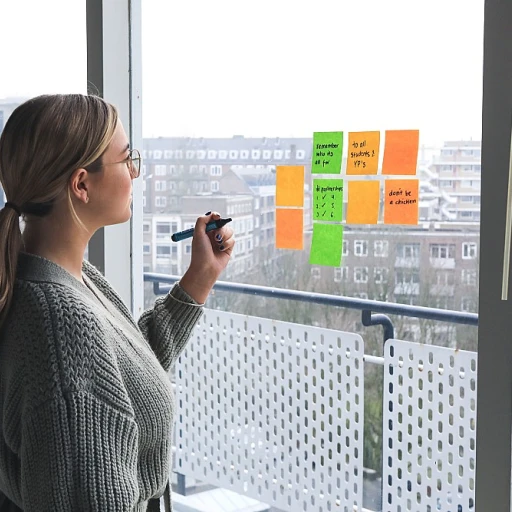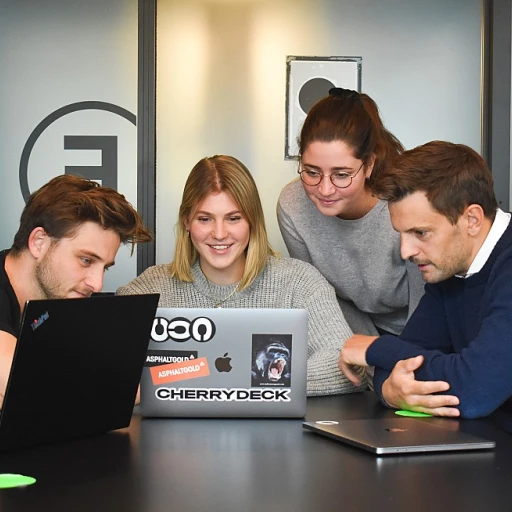
Understanding the electronic permit to work system
What is an Electronic Permit to Work System?
In New Zealand workplaces, safety management is a top priority, especially when it comes to high risk activities like hot work, confined space entry, or contractor management. An electronic permit to work (PTW) system is a digital solution that replaces traditional paper-based work permits. This work software streamlines the entire PTW process, allowing office managers and safety teams to issue, track, and approve work permits in real time.
How Does a Digital PTW System Operate?
With a PTW system, all permit requests are managed through a centralised platform. Workers and contractors can submit permit work applications via desktop or mobile devices, making it easier to initiate and monitor approvals. The system provides a clear view of who is on site, what work is being done, and the status of each safety permit. This real time visibility is crucial for effective risk management and compliance with New Zealand workplace safety regulations.
- Automated workflows for permit approvals and renewals
- Instant notifications to relevant parties
- Easy access to historical permit data for audits
- Integration with contractor management and site access controls
Why Move Away from Paper-Based Permits?
Paper-based systems often lead to lost documents, delays in approvals, and gaps in compliance. An electronic permit system addresses these issues by providing a single source of truth for all work permits. This not only improves workplace safety but also reduces administrative time and errors. For office managers, adopting PTW software means more efficient management of permits, better control over high risk work, and enhanced contractor oversight.
As digital transformation accelerates in New Zealand, electronic PTW systems are becoming essential for companies aiming to maintain high standards of safety and compliance. For more on how technology is shaping workplace safety, see this article on COVID-19 access control and its impact on safety in New Zealand companies.
Key challenges for office managers in New Zealand
Common Obstacles in Managing Permits and Safety
Office managers in New Zealand face a unique set of challenges when it comes to managing workplace safety and compliance. The traditional paper-based permit to work (PTW) process can be time-consuming and prone to errors, especially in high-risk environments like construction, manufacturing, or facilities with confined space and hot work activities. Manual systems often lead to misplaced permits, delayed approvals, and difficulties in tracking real-time permit status across multiple sites.
Balancing Compliance and Efficiency
Ensuring compliance with New Zealand’s strict workplace safety regulations is a constant concern. Office managers must coordinate between workers, contractors, and management to make sure every work permit, safety permit, and PTW request is properly documented and approved. This can be overwhelming, particularly when juggling multiple permit requests and managing contractor access. The risk of non-compliance increases if there is no clear audit trail or if permits are not updated in real time.
Administrative Burden and Communication Gaps
- Manual permit work processes often require significant administrative time, with repetitive data entry and physical document storage.
- Communication gaps between office staff, site supervisors, and workers can result in delays or misunderstandings about permit approvals and safety requirements.
- Tracking the status of work permits and PTW systems across different locations is difficult without a centralized view, making it harder to respond quickly to urgent or high-risk work.
Adapting to Modern Safety Expectations
With the rise of remote work and mobile technology, office managers are expected to provide real-time access to permit information and approvals. Workers and contractors increasingly expect to use mobile devices to submit permit requests, check the status of their permits, and receive safety updates. This shift requires a flexible, digital approach to PTW management that can integrate with existing company systems and support effective contractor management.
For more insights on how workplace safety is evolving in response to recent challenges, you can read about how COVID-19 access control is shaping workplace safety in New Zealand companies.
How digital permits improve compliance and safety
Enhancing Compliance and Safety with Real-Time Digital Oversight
For office managers in New Zealand, ensuring workplace safety and compliance is a daily responsibility. Traditional paper-based permit to work (PTW) systems often fall short, especially when managing high risk activities like hot work or confined space entry. Electronic permit to work systems address these challenges by providing real-time visibility and control over all work permits and safety approvals.
- Instant access to permit data: With PTW software, managers and safety teams can view the status of all permit requests, approvals, and active work permits across the site at any time. This real-time oversight helps prevent unauthorised work and ensures that all safety checks are completed before work begins.
- Automated compliance tracking: Electronic permit systems automatically record every step in the PTW process, from initial request to final closure. This creates a clear audit trail for compliance with New Zealand workplace safety regulations, reducing the risk of missed documentation or human error.
- Improved contractor management: Managing external contractors is simpler and safer with digital PTW systems. Contractors can submit permit requests remotely, and office managers can review, approve, or reject them from any device. This streamlines the onboarding process and ensures all workers meet safety requirements before entering the site.
- Mobile access for workers: Many PTW systems offer mobile functionality, allowing workers and supervisors to access permits, safety information, and risk assessments directly from their phones or tablets. This supports real-time communication and faster response to changing site conditions.
By digitising the permit work process, office managers can proactively manage risk, reduce administrative time, and ensure that all safety permit requirements are met. The ability to monitor work software and PTW systems in real time not only improves compliance but also builds a culture of safety across the organisation. For a deeper look at how digital systems can enhance workplace safety, see this article on enhancing visitor management in New Zealand companies.
Streamlining workflows and reducing administrative burden
Reducing Paperwork and Manual Processes
For office managers in New Zealand, handling traditional permit to work (PTW) systems often means dealing with stacks of paperwork, manual signatures, and chasing approvals across departments. An electronic permit to work system replaces these manual steps with digital workflows, making it easier to manage work permits, safety approvals, and contractor management in real time. This shift not only saves time but also reduces the risk of lost documents and errors in the PTW process.
Centralised Oversight and Real-Time Visibility
With digital PTW software, all permit requests, approvals, and safety permit details are stored in one secure platform. Office managers can view the status of work permits, hot work, and confined space activities instantly, without searching through emails or paper files. Real-time dashboards provide a clear view of ongoing and upcoming work, supporting better risk management and compliance with workplace safety regulations.
Mobile Access for On-the-Go Approvals
Modern PTW systems offer mobile access, allowing managers and workers to review, approve, or request demo permits from anywhere on site. This flexibility speeds up the permit work process, especially for high risk or contractor jobs that require urgent attention. Mobile notifications ensure no permit requests are missed, keeping the workflow moving efficiently.
Automated Reminders and Audit Trails
Electronic permit systems automate reminders for expiring permits, overdue approvals, and required safety checks. This automation helps office managers stay on top of compliance requirements and reduces the administrative burden of tracking deadlines manually. Comprehensive audit trails also make it easier to demonstrate compliance during audits or investigations, as every action in the PTW system is logged and accessible.
- Faster permit approvals and renewals
- Reduced administrative workload for office staff
- Improved contractor management and site safety
- Enhanced compliance with real-time reporting
By streamlining workflows and reducing manual tasks, electronic permit to work systems empower office managers to focus on proactive safety management and efficient operations, rather than paperwork and chasing approvals.
Integration with existing company systems
Connecting Your PTW System with Everyday Tools
For office managers in New Zealand, one of the most practical advantages of an electronic permit to work (PTW) system is how it integrates with the company’s existing software and workflows. Seamless integration means less time spent on manual data entry, fewer errors, and a smoother experience for everyone involved in the permit process.
Key Integration Points
- HR and Contractor Management: Linking your PTW system with HR and contractor management software ensures that only approved workers and contractors can access high risk areas or request permits. This helps maintain compliance and workplace safety standards.
- Real Time Data Sharing: Integration allows real time updates on permit status, approvals, and risk assessments. Office managers can view who is on site, what work is being done, and the current safety permit status without switching between multiple systems.
- Mobile Access: Many PTW systems offer mobile compatibility, so workers and contractors can request, review, and approve permits from anywhere on site. This speeds up the PTW process and reduces administrative delays.
- Document Management: Storing permits, risk assessments, and compliance records in one place makes audits easier and ensures nothing is lost. Integration with document management systems supports this centralisation.
Benefits for Office Managers
By connecting your electronic permit work system with other workplace software, you can:
- Reduce double handling of permit requests and approvals
- Improve visibility of all work permits and safety status in real time
- Streamline contractor management and compliance checks
- Minimise risk by ensuring only authorised workers are assigned to high risk or confined space tasks
- Save time on administrative tasks, freeing you up for more strategic management work
When evaluating PTW systems, look for software that offers easy integration options, robust mobile features, and clear reporting tools. A demo or trial can help you see how the system fits with your current workflows and site requirements. This approach ensures your investment in a PTW system delivers real improvements in workplace safety, compliance, and efficiency.
Best practices for implementing an electronic permit to work system
Setting up for successful adoption
Rolling out an electronic permit to work (PTW) system in a New Zealand workplace requires careful planning and a focus on both people and processes. Office managers play a crucial role in ensuring that the transition from paper-based permits to digital work software is smooth and effective. Here are some practical steps to help your team get the most out of your new PTW system:
- Engage all stakeholders early: Involve workers, contractors, and safety teams from the start. Their input helps tailor the PTW software to real site needs, especially for high risk activities like hot work or confined space entry.
- Provide clear training: Offer hands-on training sessions for everyone who will use the system. Focus on how to request, approve, and view permits in real time, whether on desktop or mobile devices.
- Define clear workflows: Map out the PTW process, including permit requests, approvals, and contractor management. Make sure everyone understands their responsibilities in the new system.
- Integrate with existing systems: Connect your electronic permit system with other workplace safety and management software. This reduces double-handling and ensures a single source of truth for compliance and risk management.
- Monitor and review: Use the system’s reporting features to track permit work, identify bottlenecks, and spot trends in safety permit usage. Regularly review processes to keep improving.
- Encourage feedback: Create channels for workers and contractors to share their experiences with the PTW system. This helps you catch issues early and adapt the software to real workplace needs.
- Request a demo: Before full rollout, request demo sessions from your PTW software provider. This lets your team see the system in action and ask questions specific to your site and work permits.
Common pitfalls to avoid
- Overcomplicating the process: Keep permit workflows simple and focused on safety. Too many steps can slow down approvals and frustrate workers.
- Neglecting mobile access: Many workers and contractors need to access permits on site. Make sure your PTW system is mobile-friendly for real time updates.
- Ignoring compliance requirements: Stay up to date with New Zealand regulations for workplace safety and high risk work. Your PTW software should support compliance, not create extra work.
By following these best practices, office managers can ensure their electronic permit to work system delivers real improvements in safety, risk management, and administrative efficiency across their organisation.













